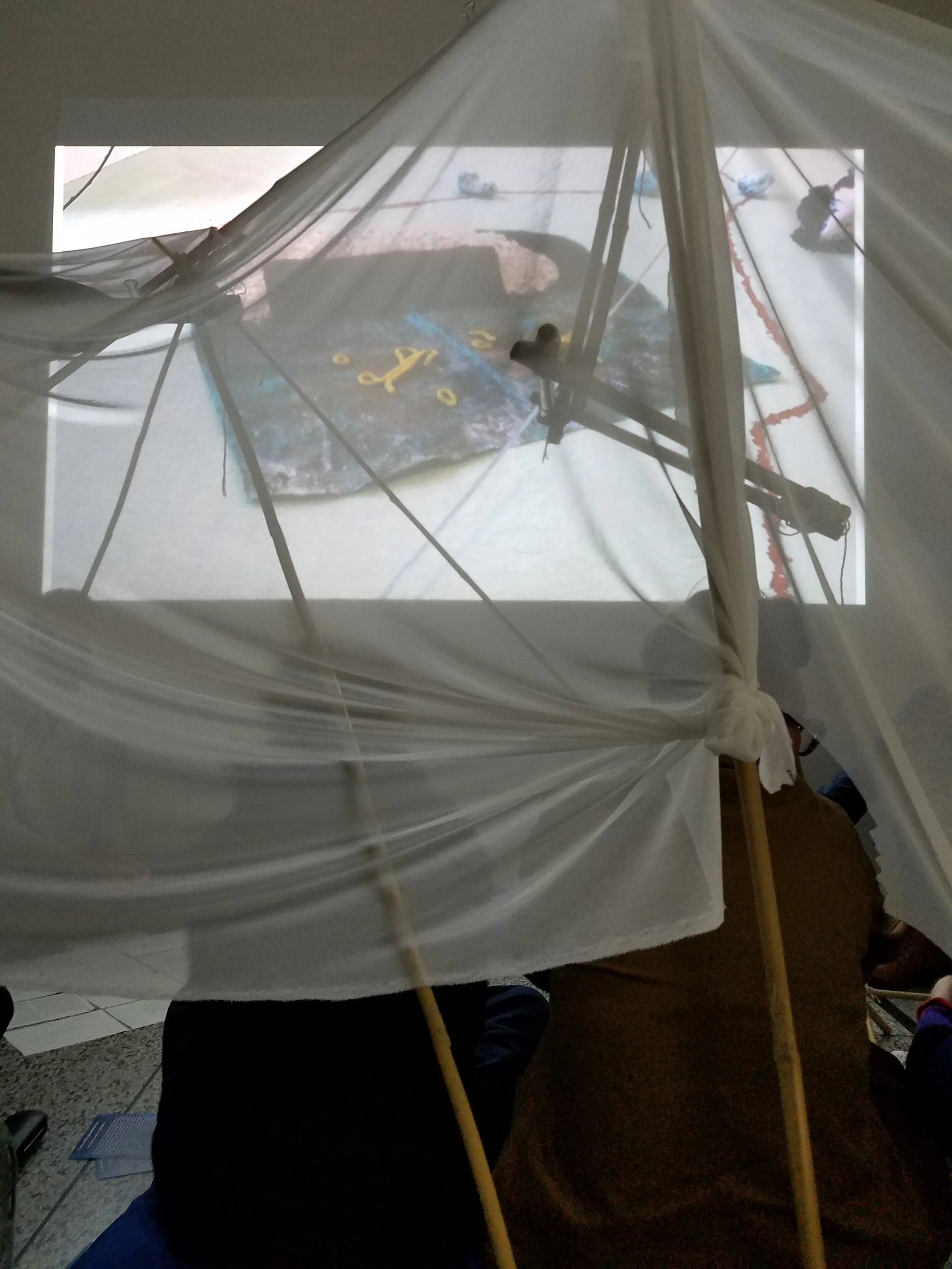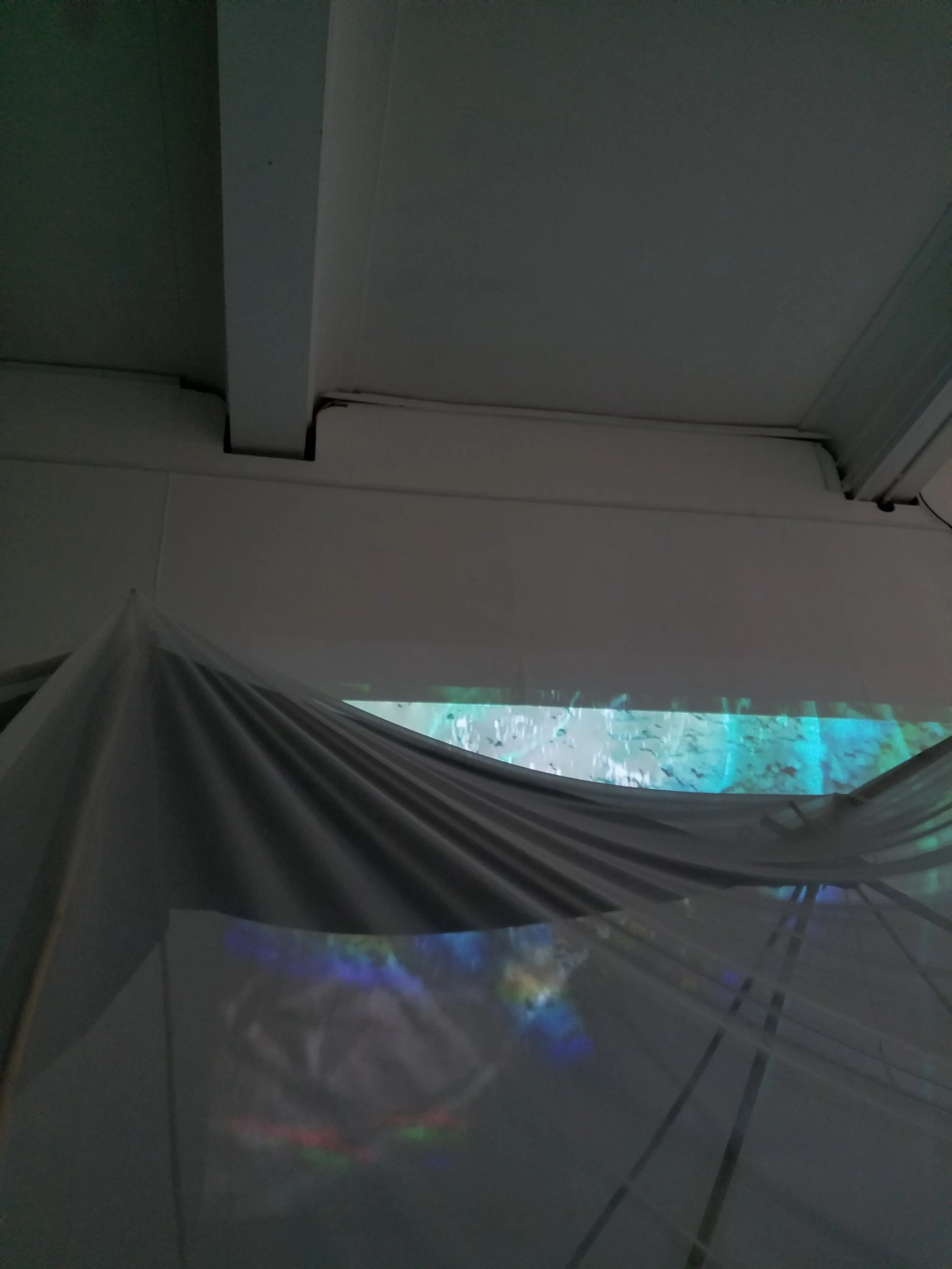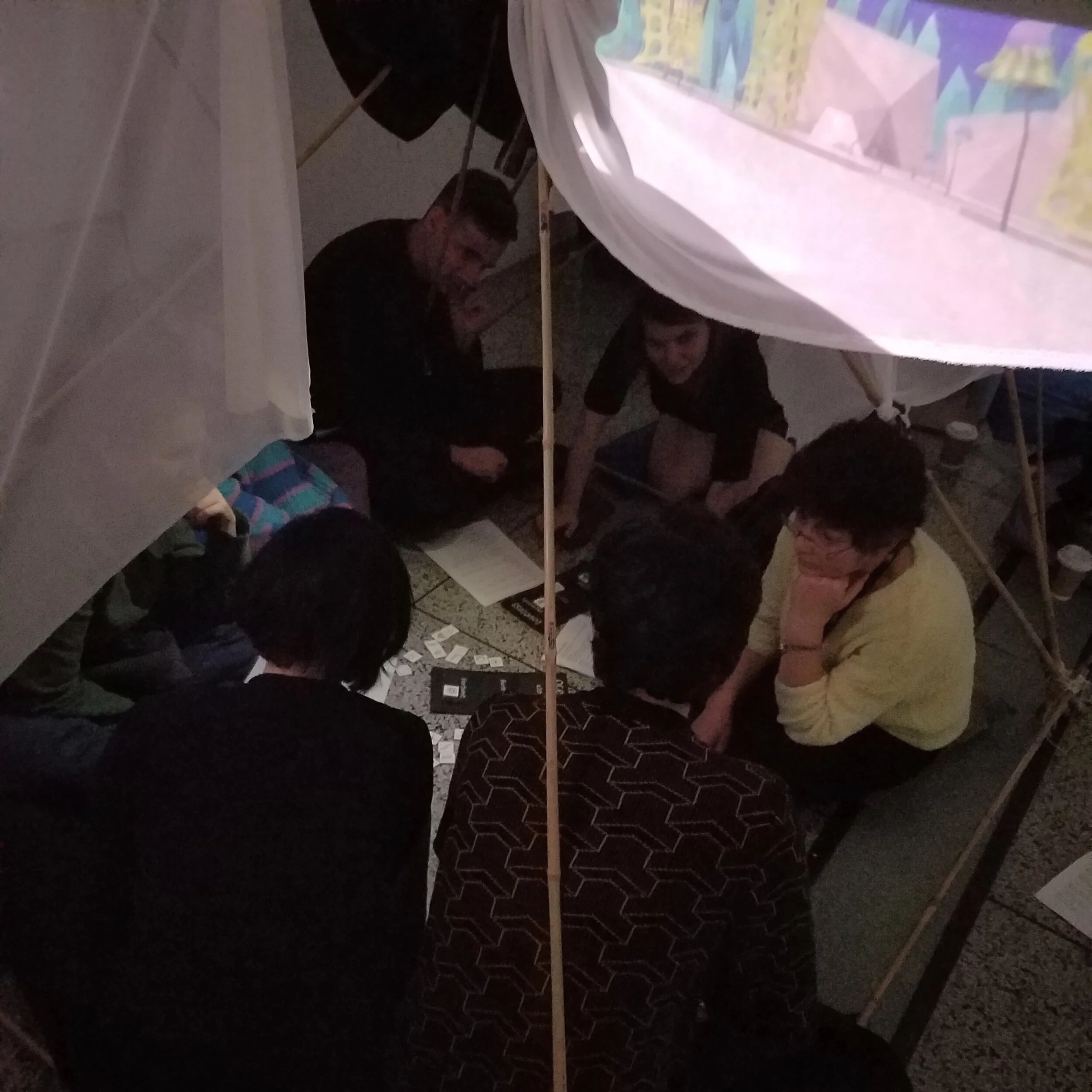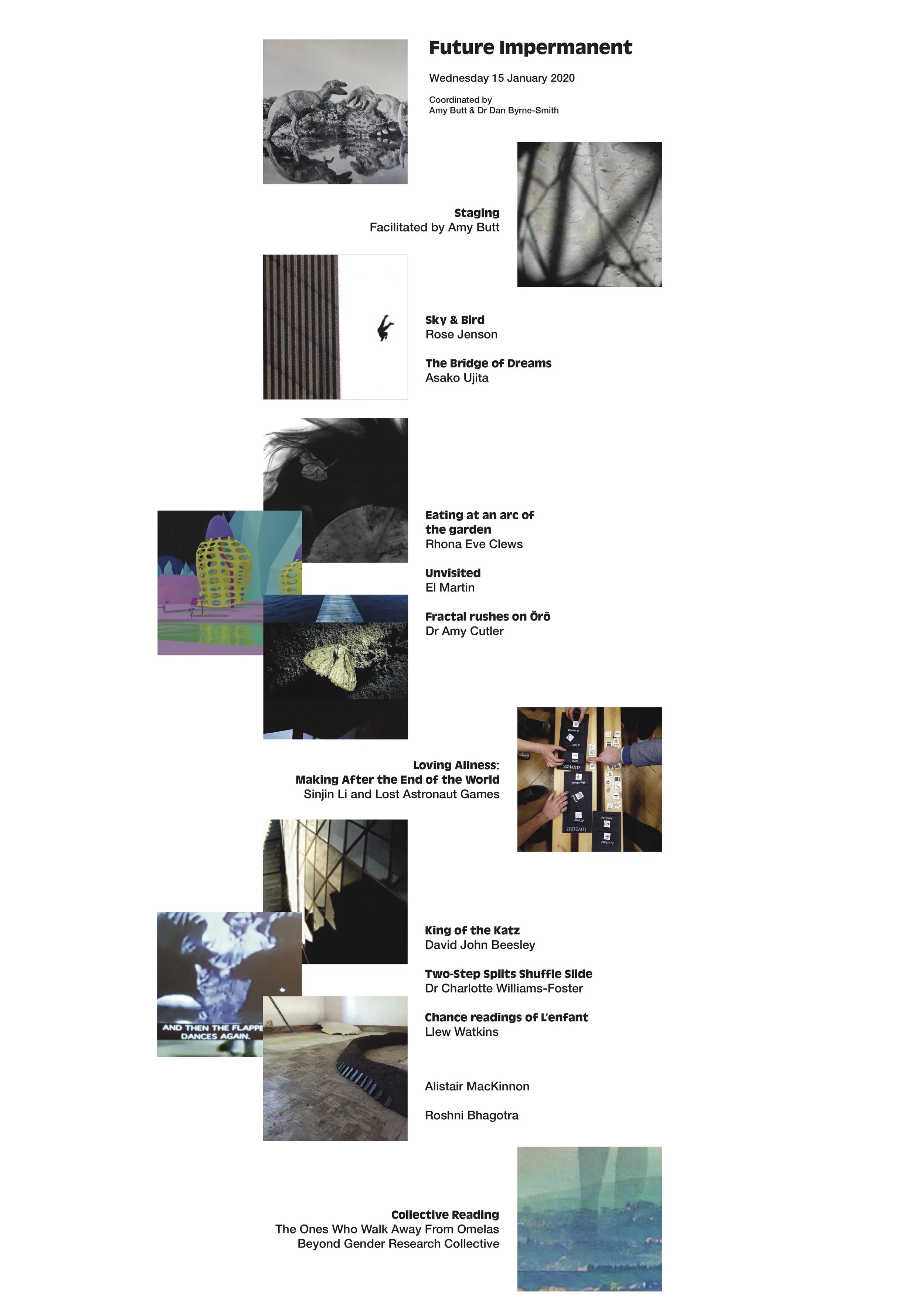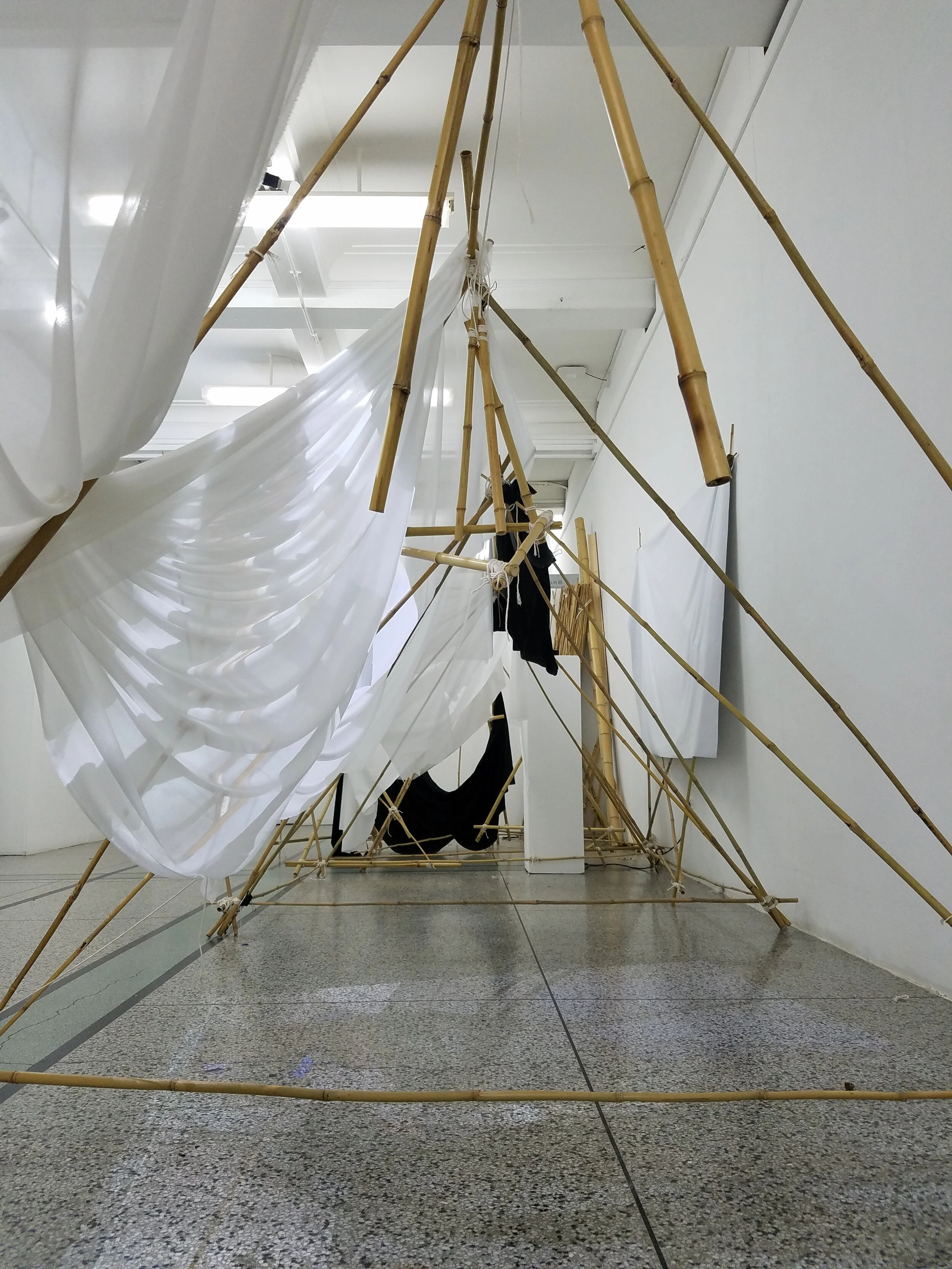Exhibition, Event and Installation
Produced with Dr Dan Byrne-Smith
Wimbledon Space
Wimbledon College of Art, UAL
Future Impermanent is a project that brings together workshops, discussions, performances and talks themed around science fiction narratives and science fictional thinking.
The aim is to explore speculative methods of facilitating engagement, agency and a sense of responsibility regarding the issue of human impact on the natural world. This event was an opportunity to experiment with science fiction as a method of reading the social and environmental demands of the future. These speculations and experiments will also emphasise the importance of seeing science fiction as being grounded in the challenges of the present moment, while rendering that present impermanent.
Exhibiting Artists
The exhibition featured work by artists, film makers and architects alongside students, theorists and emerging practitioners. This work was displayed on an installation structure which was the product of a speculative design process developed over the course of the one-day event. The process of collectively constructing an installation was continually interrupted and overlaid by presentations, performances and film screenings which explore notions of narrative speculation, contained within or projected onto the developing fragmentary structure. In response, the installation as the mediator and site of engagement was manifestly altered by this interaction, reconfigured by the participants and practitioners to accommodate shifting speculative landscapes.
Installation
The installation was produced as part of a collective making session, responding to an extract from the science fictional text ‘ A Door Into Ocean’ by Joan Slonczewski. It uses bamboo, rope and cloth to create space which is a temporary refuge and raft, a site which opens up the possibility of different ways of shaping interaction.
The structure was exhibited as it appears in the final moment of speculation, its apparent representation of a fixed end-point to a design process unsettled and rendered uncomfortable by the simultaneous display of the works which have shaped it. An unreliable memory trace, whereby formative works are distorted by the subsequent transformation of the site which holds them. By both exhibiting and performing speculative design practices which inform the construction of a collectively held historical account of itself, this exhibition provides a wider point of reflection of the role of speculation within the curated narrative space of the museum.

